- <a href="https://library.nhrc.or.th/th" aria-label="home" class="mainMenu"> <em class="fas fa-home"></em> </a>
-
เกี่ยวกับเรา
ย้อนกลับ เกี่ยวกับเรา<a href="https://library.nhrc.or.th/th/history" aria-label="menu" class="submenu-list" target="_self"> ความเป็นมา </a> <a href="https://library.nhrc.or.th/th/structure" aria-label="menu" class="submenu-list" target="_self"> โครงสร้าง </a> <a href="https://library.nhrc.or.th/th/vision" aria-label="menu" class="submenu-list" target="_self"> วิสัยทัศน์/พันธกิจ </a> <a href="https://library.nhrc.or.th/th/award" aria-label="menu" class="submenu-list" target="_self"> รางวัล </a> <a href="https://library.nhrc.or.th/th/announce" aria-label="menu" class="submenu-list" target="_self"> ระเบียบ/ประกาศ </a> นโยบายองค์กรอัลบั้มภาพ<a href="https://library.nhrc.or.th/th/website-policy" aria-label="menu" class="submenu-list"> นโยบายเว็บไซต์ </a> <a href="https://library.nhrc.or.th/th/website-security-policy" aria-label="menu" class="submenu-list"> นโยบายการรักษาความมั่นคงปลอดภัยเว็บไซต์ </a> <a href="https://library.nhrc.or.th/th/personal-information-protection-policy" aria-label="menu" class="submenu-list"> นโยบายการคุ้มครองข้อมูลส่วนบุคคล </a> <a href="https://library.nhrc.or.th/th/privacy-policies" aria-label="menu" class="submenu-list"> นโยบายความเป็นส่วนตัว </a> <a href="https://library.nhrc.or.th/th/terms-of-service" aria-label="menu" class="submenu-list"> เงื่อนไขการใช้บริการ </a> <a href="https://library.nhrc.or.th/th/cookies-policy" aria-label="menu" class="submenu-list"> นโยบายคุกกี้ </a><a href="https://library.nhrc.or.th/th/album-image" aria-label="menu" class="submenu-list"> อัลบั้มภาพ </a> <a href="https://library.nhrc.or.th/th/gallery360" aria-label="menu" class="submenu-list"> ภาพ 360° </a>
-
บริการ
ย้อนกลับ บริการ<a href="https://library.nhrc.or.th/th/borrow-and-return" aria-label="menu" class="submenu-list" target="_self"> การยืม-คืน </a> <a href="https://library.nhrc.or.th/th/service" aria-label="menu" class="submenu-list" target="_self"> บริการทั้งหมด </a> <a href="https://library.nhrc.or.th/th/flow-service" aria-label="menu" class="submenu-list" target="_self"> ขั้นตอนการใช้บริการ </a> <a href="https://library.nhrc.or.th/th/imfortable" aria-label="menu" class="submenu-list" target="_self"> สิ่งอำนวยความสะดวก </a> แบบฟอร์มบริการ<a href="https://forms.gle/syLmif2eKJ3kfA2g9" aria-label="menu" class="submenu-list" target="_blank"> ประเมินความพึงพอใจ </a> <a href="https://library.nhrc.or.th/th/event" aria-label="menu" class="submenu-list" target="_self"> กิจกรรม </a> <a href="https://library.nhrc.or.th/th/plan" aria-label="menu" class="submenu-list" target="_self"> แนะนำพื้นที่ </a><a href="https://library.nhrc.or.th/th/form-search" aria-label="menu" class="submenu-list"> แบบฟอร์มบริการค้นหาสารสนเทศ </a> <a href="https://library.nhrc.or.th/th/form-suggestions" aria-label="menu" class="submenu-list"> แบบฟอร์มแนะนำทรัพยากรสารสนเทศ </a>
-
แหล่งสารสนเทศ
ย้อนกลับ แหล่งสารสนเทศ<a href="https://library.nhrc.or.th/th/search?ctrl=kw&searchopt=&type=place&keyword=14" aria-label="menu" class="submenu-list" target="_self"> สิ่งพิมพ์สำนักงาน กสม. </a> <a href="https://library.nhrc.or.th/th/search" aria-label="menu" class="submenu-list" target="_self"> ทรัพยากรสารสนเทศทั้งหมด </a> สารสนเทศด้านสิทธิมนุษยชน<a href="https://library.nhrc.or.th/th/network" aria-label="menu" class="submenu-list" target="_self"> เครือข่ายความร่วมมือระหว่างห้องสมุด </a> <a href="https://library.nhrc.or.th/th/dictionary" aria-label="menu" class="submenu-list" target="_self"> พจนานุกรมศัพท์สิทธิมนุษยชน </a> <a href="https://library.nhrc.or.th/th/sourceresearch" aria-label="menu" class="submenu-list" target="_self"> ฐานข้อมูลงานวิจัย/วิทยานิพนธ์ </a> <a href="https://www.tci-thaijo.org/" aria-label="menu" class="submenu-list" target="_blank"> ฐานข้อมูลวารสารอิเล็กทรอนิกส์ (ThaiJO) </a> <a href="https://ncx.dataxet.co/" aria-label="menu" class="submenu-list" target="_blank"> ฐานข้อมูลข่าวออนไลน์ </a> <a href="http://library.nhrc.or.th/document/Manual/APA.pdf" aria-label="menu" class="submenu-list" target="_blank"> คู่มือการเขียนอ้างอิงทางวิชาการ </a><a href="https://library.nhrc.or.th/th/law-of-human-rights" aria-label="menu" class="submenu-list"> กฎหมายด้านสิทธิมนุษยชน </a> <a href="https://library.nhrc.or.th/th/international-human-rights" aria-label="menu" class="submenu-list"> สิทธิมนุษยชนระหว่างประเทศ </a> <a href="https://library.nhrc.or.th/th/international-human-rights-treaties" aria-label="menu" class="submenu-list"> พันธกรณีระหว่างประเทศ </a> <a href="https://library.nhrc.or.th/th/national-human-rights-commissions" aria-label="menu" class="submenu-list"> สถาบันสิทธิมนุษยชนแห่งชาติ </a> <a href="https://library.nhrc.or.th/th/judgment" aria-label="menu" class="submenu-list"> คำพิพากษาของศาล </a> <a href="https://library.nhrc.or.th/th/human-rights-online-resources" aria-label="menu" class="submenu-list"> แหล่งสารสนเทศด้านสิทธิมนุษยชน </a> <a href="https://library.nhrc.or.th/th/un-and-affiliated-agencies" aria-label="menu" class="submenu-list"> กองทุนและโครงการของสหประชาชาติ </a>
-
สถิติ
ย้อนกลับ สถิติ<a href="https://library.nhrc.or.th/th/statistic/1" aria-label="menu" class="submenu-list" target="_self"> การเข้าใช้บริการ </a> <a href="https://library.nhrc.or.th/th/statistic/2" aria-label="menu" class="submenu-list" target="_self"> การยืมทรัพยากรสารสนเทศ </a> <a href="https://library.nhrc.or.th/th/statistic/3" aria-label="menu" class="submenu-list" target="_self"> บริการตอบคำถามและช่วยการค้นคว้า </a> <a href="https://library.nhrc.or.th/th/statistic/4" aria-label="menu" class="submenu-list" target="_self"> จำนวนทรัพยากรสารสนเทศ </a> <a href="https://library.nhrc.or.th/th/statistic/5" aria-label="menu" class="submenu-list" target="_self"> จำนวนผู้เยี่ยมชมและศึกษาดูงาน </a> <a href="https://library.nhrc.or.th/th/statistic/6" aria-label="menu" class="submenu-list" target="_self"> การใช้งานผ่านเว็บไซต์ </a> <a href="https://library.nhrc.or.th/th/statistic/7" aria-label="menu" class="submenu-list" target="_self"> รายงานผลการปฎิบัติงานฯ </a>
-
ติดต่อเรา
ย้อนกลับ ติดต่อเรา<a href="https://library.nhrc.or.th/th/faq" aria-label="menu" class="submenu-list" target="_self"> คำถามที่พบบ่อย </a> <a href="https://library.nhrc.or.th/th/opening-hours-close-calendar" aria-label="menu" class="submenu-list" target="_self"> เวลาทำการ/ปฏิทินวันหยุด </a> <a href="https://library.nhrc.or.th/th/contacts-us" aria-label="menu" class="submenu-list" target="_self"> ติดต่อเรา </a>
-
สมาชิก
ย้อนกลับ สมาชิก<a href="https://library.nhrc.or.th/th/membership-application" aria-label="menu" class="submenu-list" target="_self"> สมัครสมาชิก </a> <a href="https://library.nhrc.or.th/th/member/login" aria-label="menu" class="submenu-list" target="_self"> ระบบสมาชิก </a>
New technologies for human rights law and practice
| ประเภท | เลขเรียก | สถานที่ | สถานะ | |
|
K3240 N532 2018 |
มุมหนังสือทั่วไป | บนชั้น | ขอยืม |
ให้คะแนน
| ISBN |
9781316631416 (pbk.)
|
| เลขเรียก |
K3240 N532 2018
|
| ชื่อเรื่อง |
New technologies for human rights law and practice / edited by Molly K. Land, Jay D. Aronson
|
| พิมพลักษณ์ |
New York : Cambridge University Press, 2018.
|
| รูปเล่ม |
xiv, 318 p. ; 24 cm.
|
| หมายเหตุสารบัญ |
The promise and peril of human rights technology / Molly K. Land and Jay D. Aronson
--Safeguarding human rights from problematic technologies / Lea Shaver --Climate change, human rights and technology transfer : normative challenges and technical opportunities / Dalindyebo Shabalala --Judging bioethics and human rights / Thérèse Murphy --Drones, automated weapons, and private military contractors : challenges to domestic and international legal regimes governing armed conflict / Laura A.Dickinson --The utility of user-generated content inhuman rights investigations / Jay D. Aronson --Big dataanalytics and human rights : privacy considerations incontext / Mark Latonero --The challenging power of datavisualization for human rights advocacy / John Emerson, Margaret L. Satterthwaite, and Anshul Vikram Pandey --Risk and the pluralism of digital human rights fact-finding and advocacy / Ella McPherson --Digital communications and the evolving right to privacy / Lisl Brunner --Human rights and private actors in the onlinedomain / Rikke Frank Jørgensen --Technology, self-inflicted vulnerability, and human rights / G. Alex Sinha --The future of human rights technology : apractitioner's view / Enrique Piracés. |
| บทคัดย่อ |
New technological innovations offer significant opportunities to promote and protect human rights. At thesame time, they also pose undeniable risks. In some areas, they may even be changing what we mean by human rights. The fact that new technologies are often privately controlled raises further questions about accountability and transparency and the role of human rights inregulating these actors. This volume - edited by Molly K.Land and Jay D. Aronson - provides an essential roadmap for understanding the relationship between technology andhuman rights law and practice. It offers cutting-edge analysis and practical strategies in contexts as diverse as autonomous lethal weapons, climate change technology, the Internet and social media, and water meters.
|
| หัวเรื่อง | |
| หัวเรื่อง | |
| ผู้แต่งร่วม | |
| ผู้แต่งร่วม |
| LEADER : 00000nab 2200000uu 4500 |
| 008 201027s||||||||th 000 0 tha d |
| 020 ^a9781316631416 (pbk.) |
| 050 00^aK3240^bN532 2018 |
| 245 00^aNew technologies for human rights law and practice /^cedited by Molly K. Land, Jay D. Aronson |
| 260 1^aNew York :^bCambridge University Press,^c2018. |
| 300 ^axiv, 318 p. ^c24 cm. |
| 504 ^aIncludes bibliographical references and index. |
| 505 0 ^aThe promise and peril of human rights technology /^rMolly K. Land and Jay D. Aronson --^tSafeguarding human rights from problematic technologies /^rLea Shaver --^tClimate change, human rights and technology transfer : normative challenges and technical opportunities /^rDalindyebo Shabalala --^tJudging bioethics and human rights /^rThérèse Murphy --^tDrones, automated weapons, and private military contractors : challenges to domestic and international legal regimes governing armed conflict /^rLaura A.Dickinson --^tThe utility of user-generated content inhuman rights investigations /^rJay D. Aronson --^tBig dataanalytics and human rights : privacy considerations incontext /^rMark Latonero --^tThe challenging power of datavisualization for human rights advocacy /^rJohn Emerson, Margaret L. Satterthwaite, and Anshul Vikram Pandey --^tRisk and the pluralism of digital human rights fact-finding and advocacy /^rElla McPherson --^tDigital communications and the evolving right to privacy /^rLisl Brunner --^tHuman rights and private actors in the onlinedomain /^rRikke Frank Jørgensen -- ^tTechnology, self-inflicted vulnerability, and human rights /^rG. Alex Sinha --^tThe future of human rights technology : apractitioner's view /^rEnrique Piracés. |
| 520 ^aNew technological innovations offer significant opportunities to promote and protect human rights. At thesame time, they also pose undeniable risks. In some areas, they may even be changing what we mean by human rights. The fact that new technologies are often privately controlled raises further questions about accountability and transparency and the role of human rights inregulating these actors. This volume - edited by Molly K.Land and Jay D. Aronson - provides an essential roadmap for understanding the relationship between technology andhuman rights law and practice. It offers cutting-edge analysis and practical strategies in contexts as diverse as autonomous lethal weapons, climate change technology, the Internet and social media, and water meters. |
|
650 0^aHuman rights
650 0^aTechnological innovations^xLaw and legislation |
|
700 1 ^aLand, Molly K.,^d1974-^eeditor
700 1 ^aAronson, Jay D.,^d1974-^eeditor |
| 917 ^aKN :^c1,260 |
| 955 ^a1 copy |
| 999 ^anopparat |

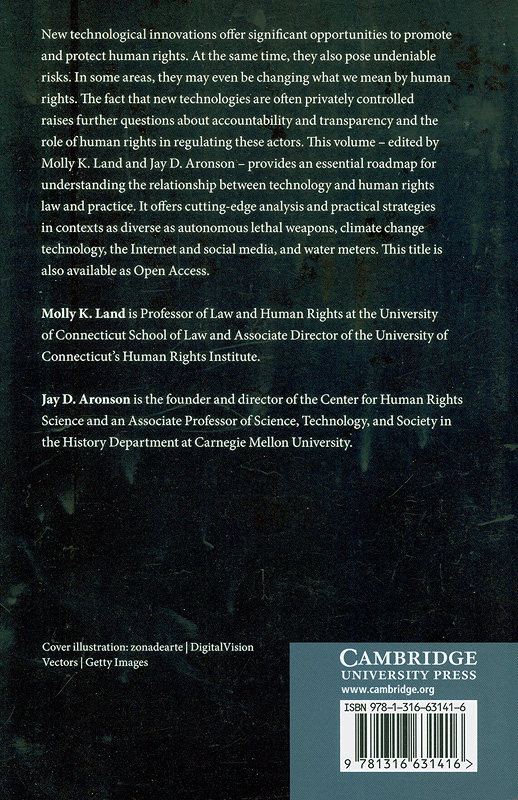
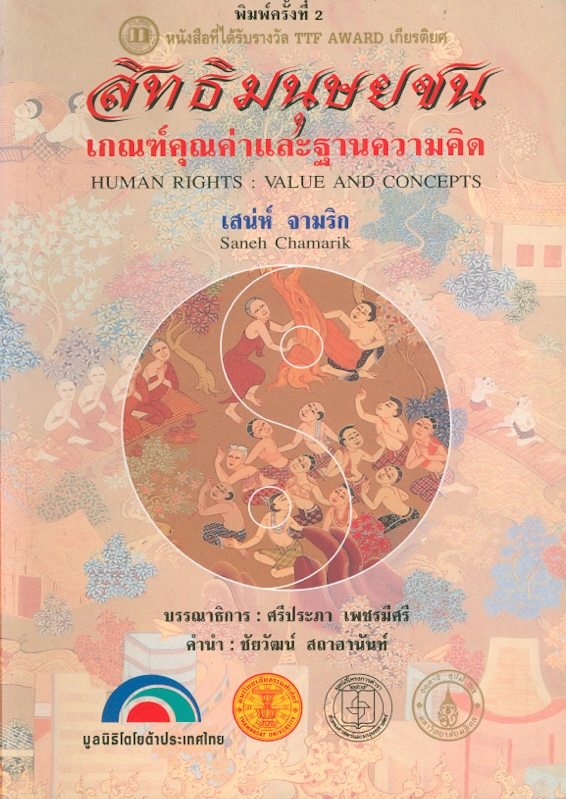
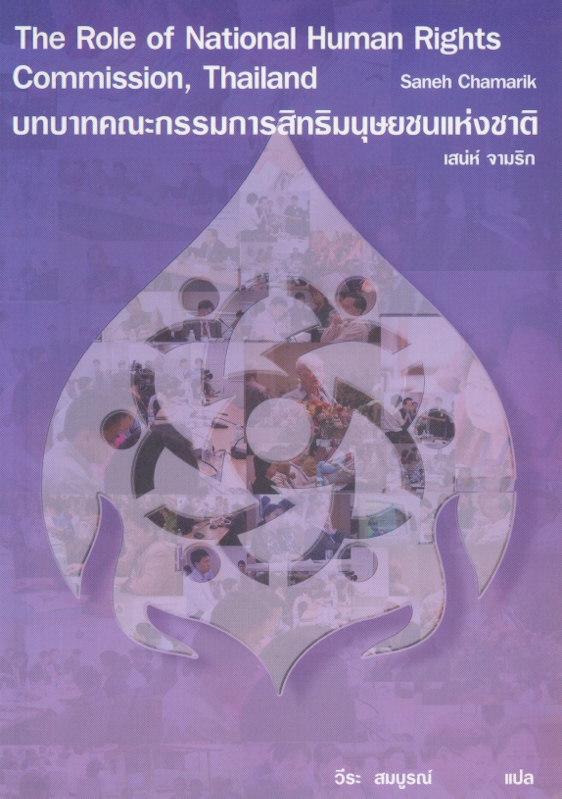
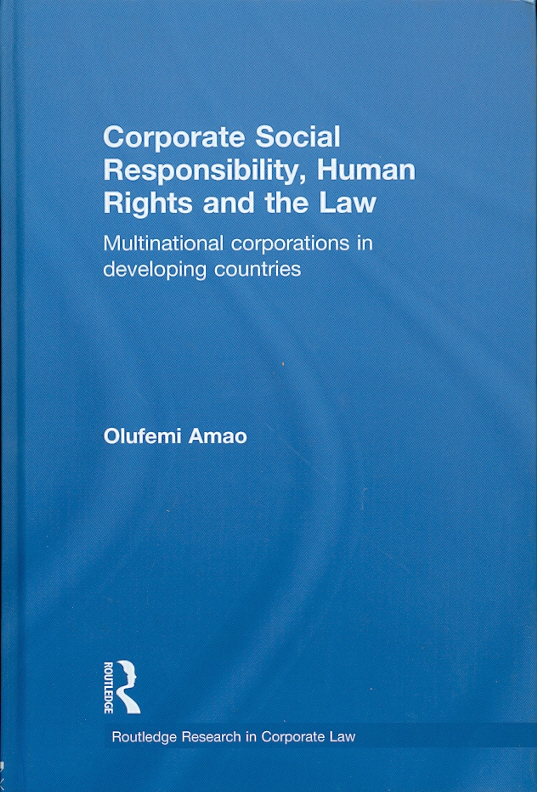
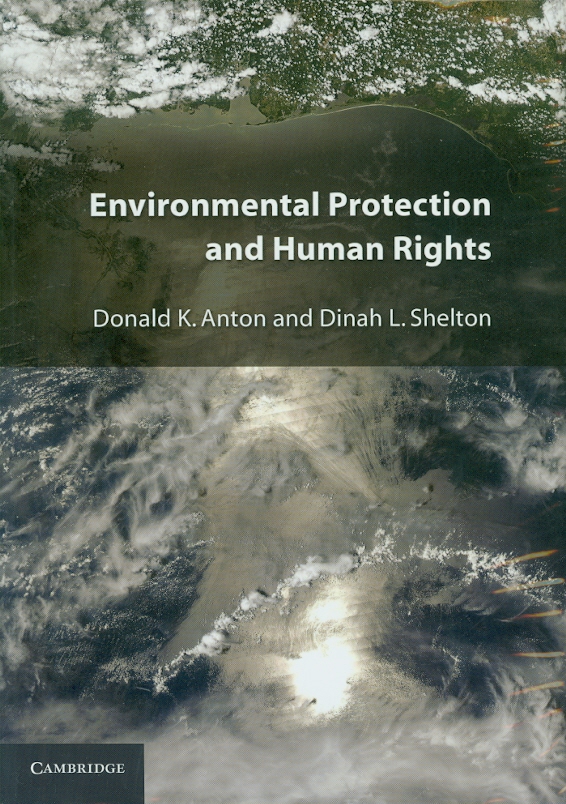
ก่อนเพิ่มแท็กหรือแสดงความคิดเห็น